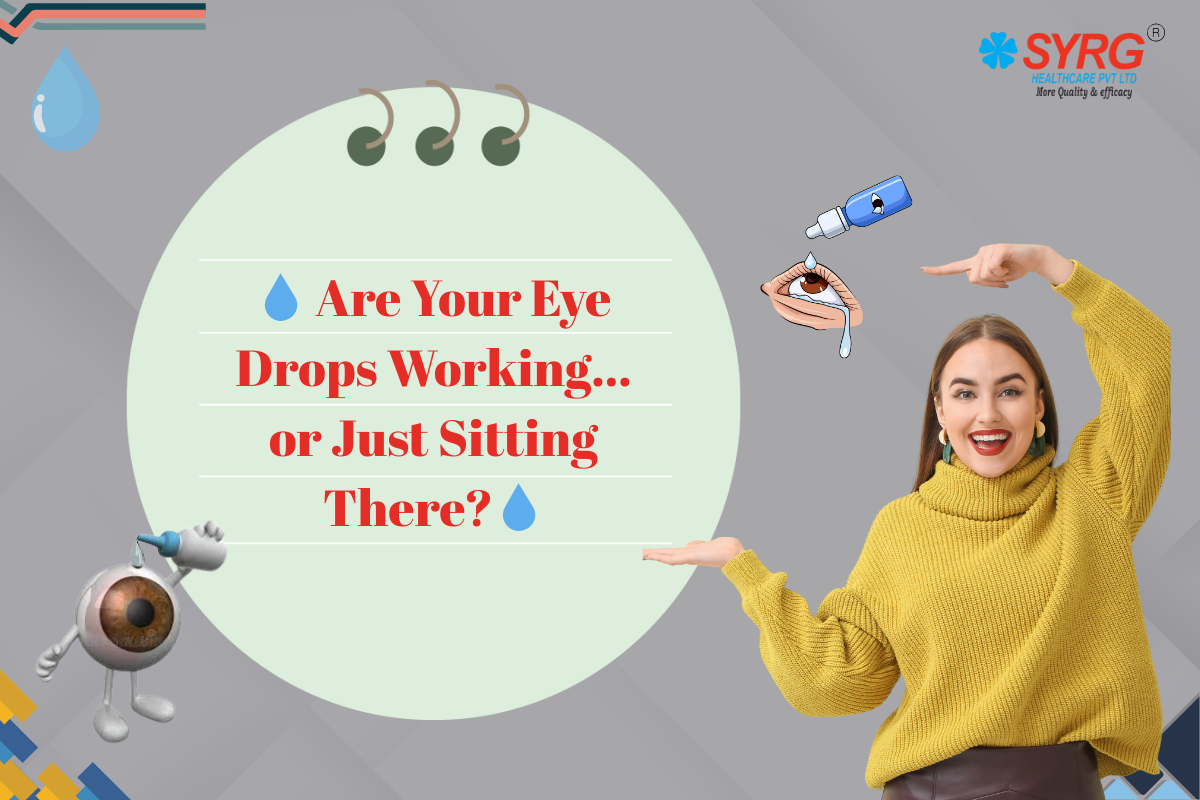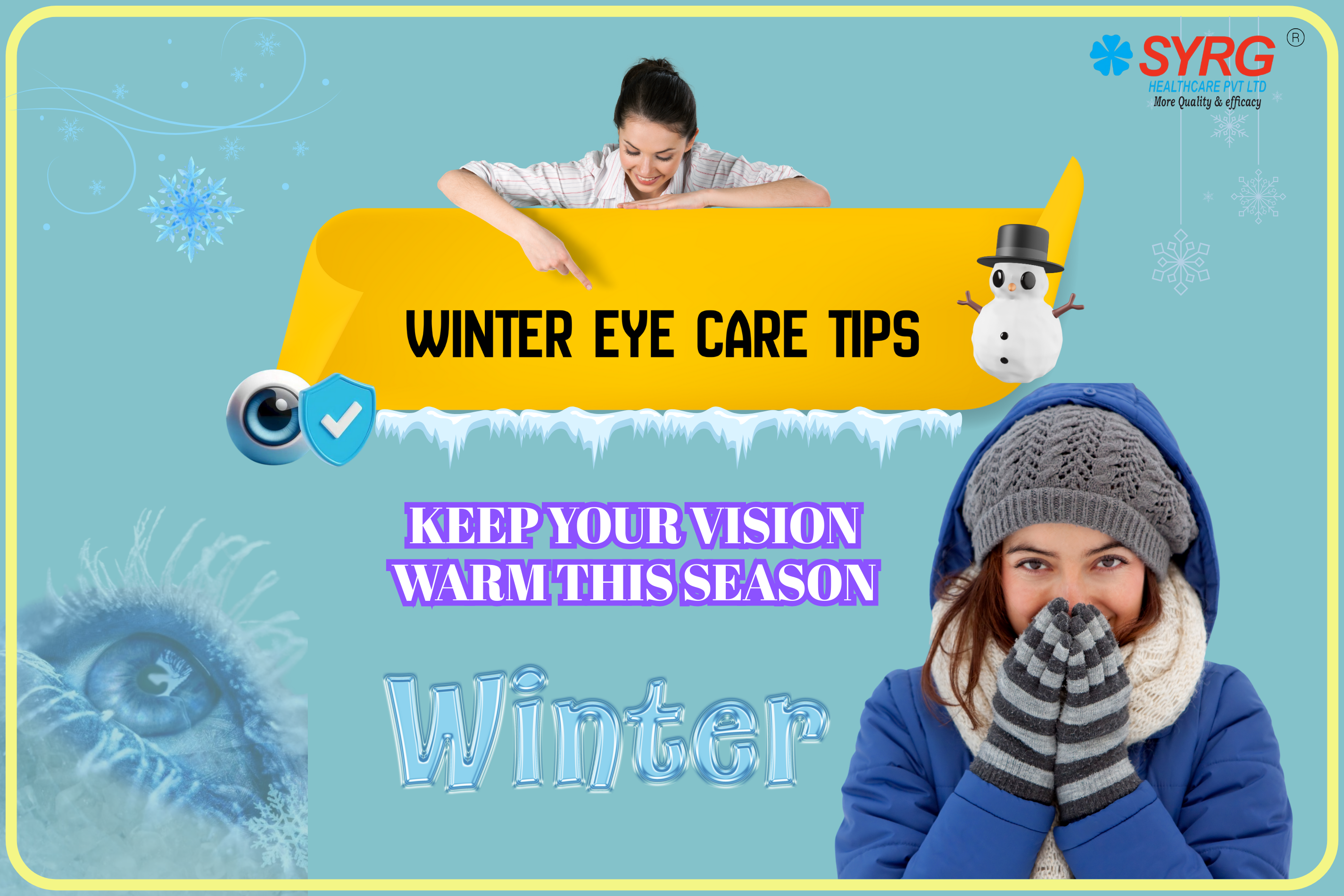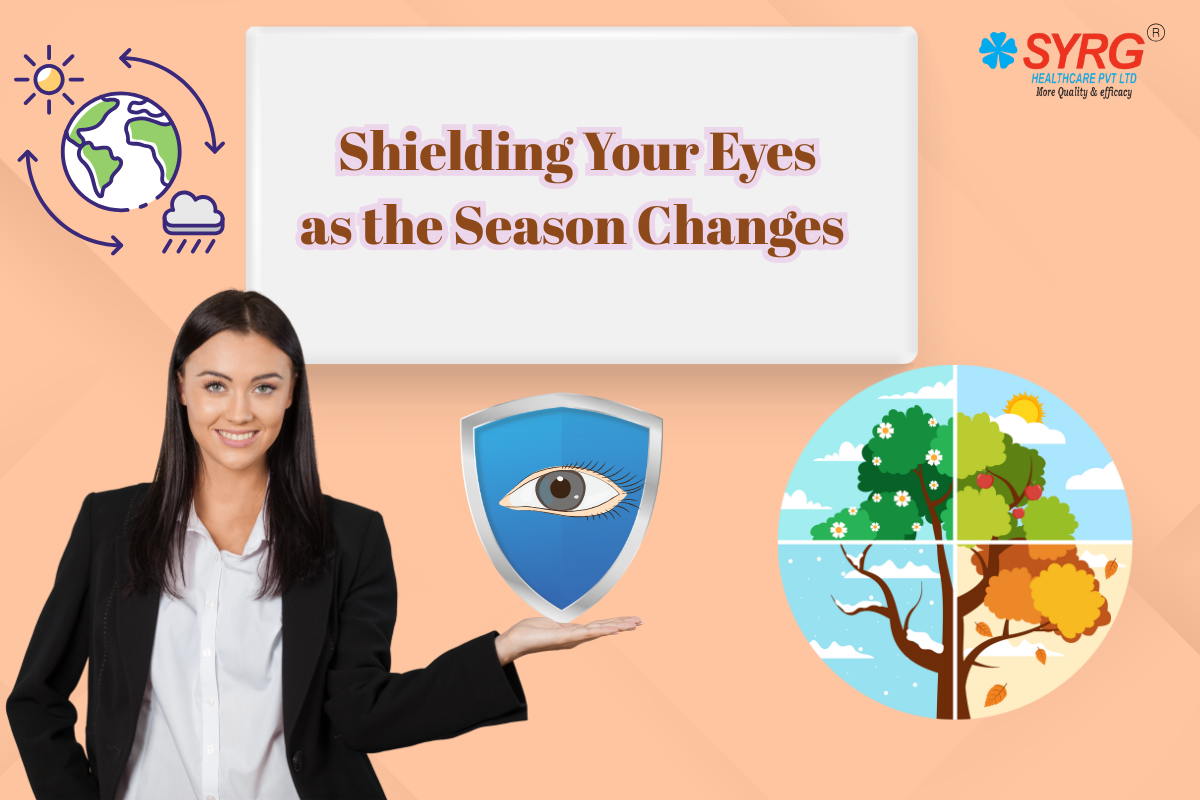Are You Using Eye Drops Correctly? A Step-by-Step Guide for Healthy Eyes
1. The WASH & START RULE
.png)
Clean hands are the first step to healthy eyes. Before reaching for the eye drop bottle, always wash your hands thoroughly with soap and water. Germs from your fingers can easily transfer into your eyes, leading to unwanted infections. By starting with clean hands, you’re ensuring that the medicine you apply stays pure and effective. Also, make sure your face is clean and free from makeup or dust, as these can interfere with the absorption of the drops. Remember—preparation is half the treatment, and a hygienic start guarantees safer results.
2. TILT & DROP MAGIC
.png)
Your posture plays a big role in how well the drops settle into your eyes. Sit comfortably in a chair or lie down if that feels easier. Tilt your head slightly backward and look up toward the ceiling. With one hand, gently pull down your lower eyelid to form a small pocket—this pocket is the perfect landing zone for the drop. Holding the bottle above your eye (but not touching it), let a single drop fall into this pocket. By aiming for this space instead of the surface of your eye, you avoid reflex blinking and allow the medicine to stay where it’s needed most.
3. ONE DROP IS ENOUGH
.png)
It’s a common misconception that using more drops will make your eyes heal faster. In reality, your eye can only hold one drop at a time. Any extra liquid simply spills out or drains into your tear ducts, leading to wastage and sometimes side effects. Overusing drops can also make your eyes feel irritated or watery. Always follow your doctor’s prescription and remember—less is more in this case. One drop is designed to deliver the exact dose your eye requires, so trust the science and don’t overdo it.
4. BLINK, DO NOT RUB
.png)
After applying the drop, your natural instinct may be to rub your eye—but resist this urge. Rubbing can push the drop out of your eye, reduce absorption, and even irritate delicate tissues. Instead, close your eyes gently and blink naturally a few times to spread the medicine evenly across the surface. Blinking helps coat the cornea with the medication, ensuring maximum coverage without disturbing the drop. If a little excess fluid leaks onto your skin, just dab it away gently with a clean tissue. Remember: blink softly, but never rub aggressively.
5. THE INNER CORNER TRICK
.png)
Here’s a little-known but very effective technique: after applying the drop, gently press on the inner corner of your eye (near the nose) with your fingertip for about 30 seconds. This blocks the tear duct, preventing the medicine from draining away into your nose or throat. Not only does this help the drop stay in your eye longer, but it also reduces the chances of side effects such as a bitter taste in the mouth or throat irritation. This simple trick makes a big difference in improving the effectiveness of your treatment.
6. WAIT BEFORE SECOND DROP
.png)
If you’ve been prescribed more than one type of eye drop, patience is key. Applying different drops back-to-back can cause the second one to wash away the first, reducing both of their effectiveness. Always wait at least 5 minutes before applying a second type of drop. This short pause allows the first medication to be absorbed properly into your eye tissues. If you’re also using an eye ointment, apply it last, since it can form a barrier that prevents drops from being absorbed. Think of it as giving each medicine its own time to shine.
7. KEEP THE BOTTLE CLEAN AND UPRIGHT
.png)
The way you handle the eye drop bottle can affect both safety and effectiveness. Never let the tip of the bottle touch your eye, fingers, or any surface—that’s how contamination happens. Once contaminated, eye drops can introduce harmful bacteria into your eyes, leading to infections. Always close the cap tightly after use and store the bottle upright in a cool, dry place. Check the instructions for storage, as some drops may require refrigeration. Treat your eye drop bottle like medicine, not a casual cosmetic, and it will serve its purpose well.
8. STICK TO THE SCHEDULE
.png)
Eye drops only work when used consistently. Skipping doses or using them irregularly can delay healing and may worsen your condition. On the other hand, overusing them can cause unwanted side effects. To stay on track, set reminders on your phone, use sticky notes, or follow your doctor’s written instructions carefully. Think of your schedule as part of your treatment—it’s not just about the drops, but about the discipline of using them correctly. Consistency ensures your eyes get steady care and healing without interruption.
Conclusion
.png)
Using eye drops properly is a simple skill, yet it’s often overlooked. Clean hands, careful positioning, and patience can make a huge difference in how effective your treatment is. One drop, when applied correctly, is more powerful than three drops wasted. By following these easy but important steps, you ensure that your eyes get the care they deserve. Remember: every drop counts, so make it work for you, not against you. Healthy eyes begin with the right habits.
FAQs: How to Use Eye Drops Properly
1. Can I use two eye drops at the same time?
No. Always wait at least 5 minutes between different eye drops so the first one has time to absorb.
2. What should I do if I miss a dose?
Apply the missed dose as soon as you remember. If it’s almost time for your next dose, skip the missed one—never double up.
3. Is it okay to share eye drops with others?
Absolutely not. Sharing eye drops can transfer bacteria and lead to serious eye infections.
4. Should I refrigerate my eye drops?
Only if the label specifically says so. Most eye drops can be kept at room temperature in a cool, dry place.
5. How do I know if my eye drops are expired?
Check the expiration date on the bottle. Discard the bottle if the liquid looks cloudy, has changed color, or has passed its expiry date.
6. Can I still wear contact lenses after using eye drops?
Depends on the type. Some medicated eye drops require you to remove lenses before applying. Always follow your doctor’s instructions.
7. Why do eye drops sometimes sting or burn?
A mild stinging sensation can be normal for some medicated drops. However, if irritation is severe or persists, stop using and consult your eye doctor immediately.
.png)




